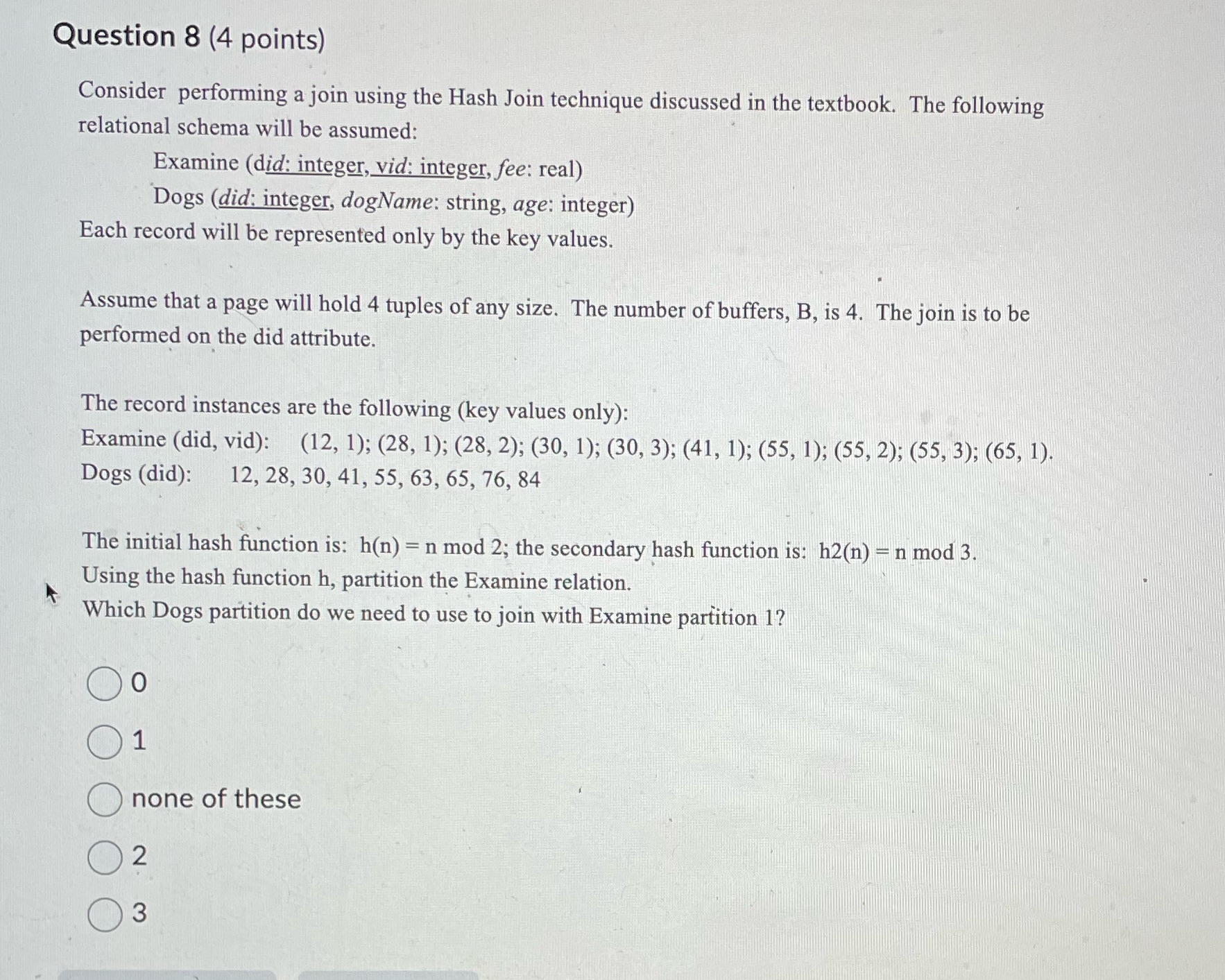Answered step by step
Verified Expert Solution
Question
1 Approved Answer
Question 8 (4 points) Consider performing a join using the Hash Join technique discussed in the textbook. The following relational schema will be assumed:

Question 8 (4 points) Consider performing a join using the Hash Join technique discussed in the textbook. The following relational schema will be assumed: Examine (did: integer, vid: integer, fee: real) Dogs (did: integer, dogName: string, age: integer) Each record will be represented only by the key values. Assume that a page will hold 4 tuples of any size. The number of buffers, B, is 4. The join is to be performed on the did attribute. The record instances are the following (key values only): Examine (did, vid): (12, 1); (28, 1); (28, 2); (30, 1); (30, 3); (41, 1); (55, 1); (55, 2); (55, 3); (65, 1). Dogs (did): 12, 28, 30, 41, 55, 63, 65, 76, 84 The initial hash function is: h(n) = n mod 2; the secondary hash function is: h2(n) = n mod 3. Using the hash function h, partition the Examine relation. Which Dogs partition do we need to use to join with Examine partition 1? 1 none of these 2 3 PARA
Step by Step Solution
There are 3 Steps involved in it
Step: 1

Get Instant Access to Expert-Tailored Solutions
See step-by-step solutions with expert insights and AI powered tools for academic success
Step: 2

Step: 3

Ace Your Homework with AI
Get the answers you need in no time with our AI-driven, step-by-step assistance
Get Started


